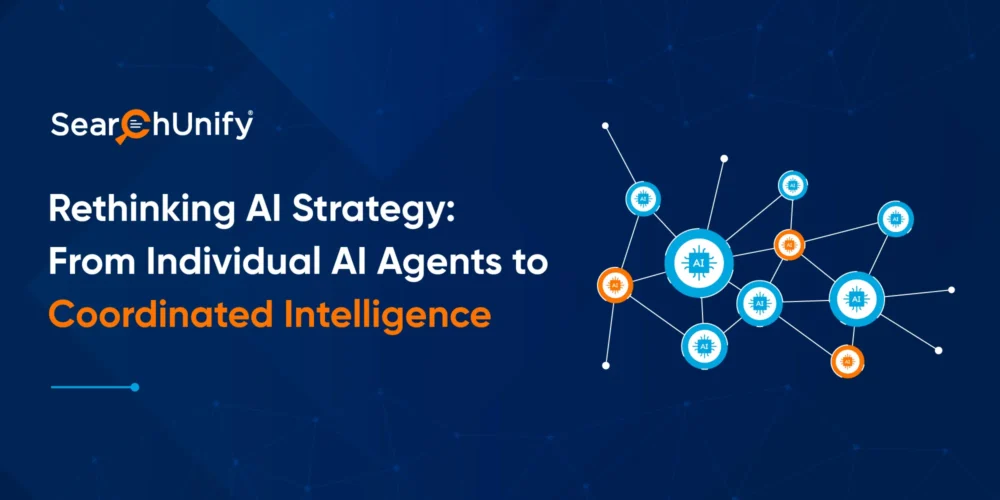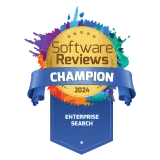
For many organizations, AI strategy still amounts to a checklist: a chatbot for customers, a search assistant for agents, and a few analytics tools scattered across the support ecosystem. On paper, these deployments look like progress. In practice, they often function as isolated silos, each solving a narrow problem and none contributing to a cohesive experience.
What’s missing isn’t more AI. It’s coordinated intelligence.
True enterprise value comes not from the individual performance of AI Agents but from how well they work together. This requires a shift in strategic posture, moving from the deployment of discrete technologies to the design of systems where intelligence flows across agents, channels, and touchpoints. When that coordination is achieved, the results are not only operationally superior but also structurally resilient. Indeed, the global AI agents market is projected to reach over $50 billion by 2030 (Grand View Research), signaling a critical need for enterprises to optimize these burgeoning capabilities.
The Hidden Cost of Isolation
Most enterprises struggle with fragmented deployments. AI Agents operate in isolation. Context is lost between touchpoints. Handoffs require human intervention or fail completely. Feedback loops are rare or nonexistent.
The result is friction. Customers encounter inconsistent experiences. Support teams wrestle with inefficiencies. Leaders face diminishing returns on AI investments that fail to scale beyond their initial use case. In fact, studies show that 82% of IT leaders believe data silos are hindering their digital transformation efforts (RudderStack), and 95% report that integration challenges impede AI adoption (BlinkOps). Such fragmentation not only limits AI’s access to relevant data, reducing its performance, but also contributes to 70% of organizations with data silos suffering a breach in the past 24 months due to uncoordinated security efforts (RudderStack).
The Strategic Shift Toward Coordination
The next step in AI maturity is not expansion but orchestration. Enterprises must begin to ask how their agents interact, how they share context, and how they contribute to an integrated flow of intelligence. This is a shift many are already exploring: a PwC May 2025 survey found that 79% of companies are already adopting AI agents, with 66% delivering measurable value through increased productivity.
Coordinated intelligence emerges when:
- Agents operate with shared state
- Communication is governed by structured protocols such as the Model Context Protocol (MCP)
- Feedback loops are embedded to drive learning and continuous improvement
This approach turns reactive bots into proactive systems. It transforms isolated transactions into dynamic, context-rich engagements.
A New Architectural Model
Legacy AI deployments often resemble patchwork. Each agent performs a task but lacks visibility into the broader system. By contrast, agentic architectures prioritize shared memory, coordination, and learning across functions.
Key gains include:
- Persistent context across the customer journey
- Orchestrated handoffs that reduce friction
- Knowledge transfer across agents and interactions, leading to cumulative intelligence
This is not simply an infrastructure upgrade but a foundation for enterprise-wide adaptability. The competitive stakes are high, with 90% of businesses viewing AI agents as a distinct competitive advantage (SellersCommerce).
A Framework for Evaluation
To assess where your organization stands, begin with a few key questions:
- How many AI Agents are in production today?
- Do these agents communicate with each other in real time?
- Is there orchestration logic that governs their collaboration?
- Are feedback mechanisms in place to refine performance over time?
These questions reveal not only technical gaps but also strategic blind spots.
Unlocking Measurable Value
Enterprises that embrace coordinated intelligence realize significant benefits across their operations:
- Elevated Efficiency: By ensuring seamless continuity across all interactions, resolutions are expedited, reducing wasted effort and improving operational flow.
- Optimized Resource Allocation: Synergies born from integrated automation significantly lower support costs, allowing for more strategic deployment of human and technological resources.
- Enhanced Customer Experience: A deeper, more consistent contextual awareness across touchpoints translates into highly personalized and satisfying customer journeys, strengthening loyalty.
- Accelerated Business Agility: The unified flow of intelligence enables rapid adaptation to evolving customer needs and dynamic market shifts, fostering a truly responsive and resilient organization.
From Deployment to Design
It is time to move beyond deployment checklists. AI strategy must evolve into system design, with a focus on how intelligence is orchestrated across the enterprise. This strategic imperative is clear: 96% of enterprises are already expanding their use of AI agents in the next 12 months, with half aiming for significant, organization-wide expansion (Cloudera).
Begin with an audit. Map the flow of context. Identify broken handoffs and missing links. Build toward an environment where agents learn from one another and operate as parts of a unified system.
This is not about having more AI. It is about making the intelligence you already have work smarter, together.
Don’t let fragmented AI hinder your customer service experience. Orchestrate intelligence across all service touchpoints.










